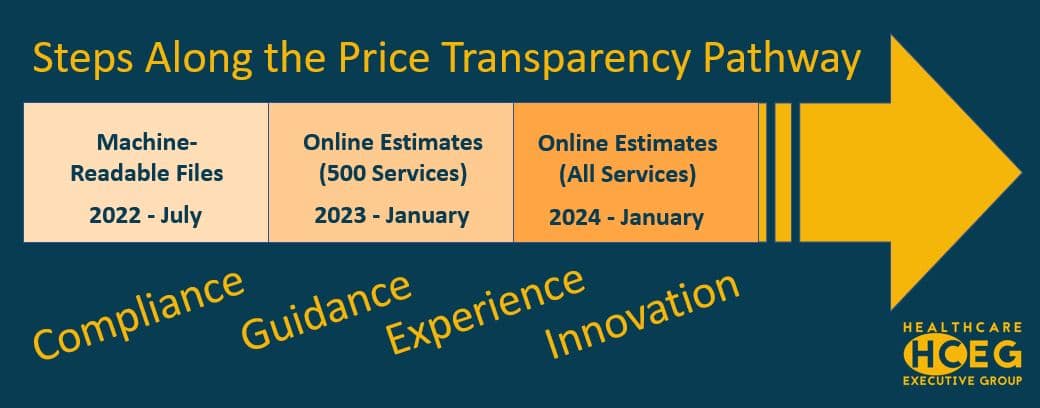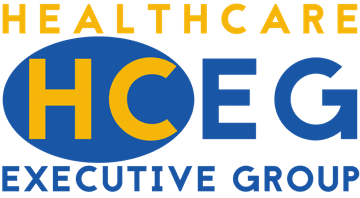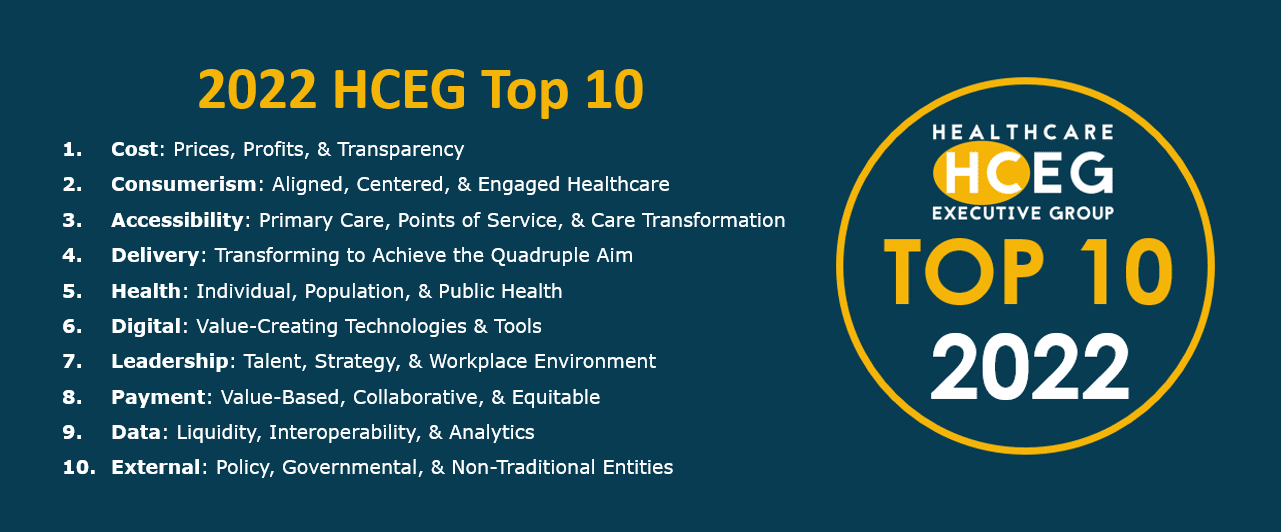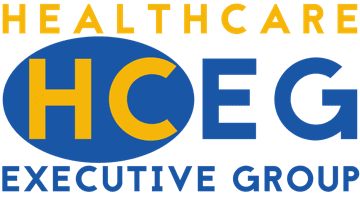
Keeping abreast of and in compliance with government regulations, mandates, and policy directives is an ongoing challenge for many industries, particularly healthcare. Not only must organizations deal with process challenges, data challenges, and technology challenges, but also with delays with and changes to requirements and specifications – and the usual issues and challenges – encountered along the way.
The CMS Transparency in Coverage rule forcing payers to post negotiated rates and cost-sharing data via machine-readable files (MRFs) is no exception to the above.
Two Executives Traverse Trenches of Transparency: Delivering Machine-Readable Files
In last week’s episode of The Collective Voice in Health IT, a podcast series hosted by HCEG’s partner WEDI (Workgroup for Electronic Data Interchange), HCEG’s Executive Director Ferris Taylor joined Matt Parker, VP of Product at HealthSparq, and Denny Brennan, CEO and Executive Director of the Massachusetts Health Data Consortium (MHDC) to discuss the status of delivering MRF’s by their due date – which was extended to July 1, 2022 by CMS in August of 2021.
Download the entire podcast episode here
CMS on Machine-Readable Files: Too Pushy? Not Too Pushy? Or Just Right?
Ferris asked Matt and Denny whether the government was pushing change on payers – like the MRF – faster than is necessary and/or faster than can reasonably be adopted? Or whether the change being pushed was the right balance? Some highlights of the insight shared by Matt and Denny include:
HealthSparq’s Matt Parker on CMS Deadline for Machine-Readable Files
- CMS’s release of the initial formal version of the MRF schema late last month has been an important milestone.
- “‘A deadline is a deadline’ and the feeling of imposed pressure will always increase with the closer one gets to a deadline.”
- CMS has been quite responsive and very helpful with considering comments and feels that CMS offers a promising partnership with health plans and organizations like HealthSparq.
Matt shared that HealthSparq customers are still working very hard to meet the date and that his take is that none of those customers feel the 7/1/22 deadline is not achievable.
RELATED: Updates: CMS v1 Data Schema Locked for MRFs
Comments from Denny Brennan on Delivering Machine-Readable Files
In addition to agreeing with Matt’s comments on CMS, Denny noted that he hasn’t heard any complaints on the CMS deadline from MHDC’s member organizations and added the following:
- Transparency mandates have brought major cultural challenges – helping to change the proverbial smoke-filled room where price negotiations were held in strict confidence to more of an open book process.
- Providing these data is just the first step in what will ultimately be a more transparent payer-provider contract negotiation process.
- Some health plans are actively marketing their readiness for compliance with the July 1st due date to their members. Denny shared that health plans need to ‘Be ready or be behind.’
It should be noted that neither Matt nor Denny felt that the government was pushing change too slow!
Listen to Matt & Denny’s complete response to the above starting at 8:16 here.
Delivering Intelligence by Delivering Machine-Readable Files
Matt and Denny discussed what they saw as the primary challenges in complying with the July 1st MRF requirements and whether these challenges were predominantly process, data, technology challenges, or other challenges?
MHDC’s Denny Brennan shared his take that delivering on the MRF mandate is primarily a cultural challenge: “We are moving from a data economy that was largely institutional and enterprise-based to one that’s going to become a real health data economy.”
This shift in mindset to make the move from the existing, siloed institutional environment to a transparent healthcare marketplace based on transparent data and prices was noted by Denny as a challenge. He shared that health plans are embracing this new marketplace as an opportunity and a means of competitively differentiating themselves.
RELATED: Diving into the Details: What You Need to Know About the Machine-Readable Files Mandate
Machine-Readable Files: A Step Toward Moving Beyond Constraints of the Past
Adding to Denny’s take on an essential cultural shift, HealthSparq’s Matt Parker shared that data being used to populate MRFs are essentially artifacts of the way the healthcare system is set up. On their own, MRFs are not amenable to human consumption – hence the need for “machine-readable.”
Making Meaningful Information Available to Healthcare Consumers
Matt shared how extracting negotiated rates at the service level and building something meaningful for an end-user is just the starting point but doesn’t reflect the nuance of the way care is billed and paid for. Accordingly, while not a challenge related to the July 1st 2022 MRF due date, a big challenge (and opportunity) is creating meaningful value from MRF data via consumer self-service pricing tools and other presentation mechanisms.
RELATED: Extracting Strategic Value from Delay to Price Transparency Mandates
Going Beyond Delivering Machine-Readable Files
Ferris wrapped up the discussion by asking Matt Parker and Denny Brennan to comment on issues and opportunities they’ve observed with payer implementation of MRFs and compliance with transparency mandates in general. Denny acknowledged that a lot of mistakes are being made and will continue to be made – primarily due to garbage data. He emphasized that no individual health plan is going to be able to come up with exactly the perfect schema, the perfect file structure, the perfect applications that will allow MRF data to magically be presented (on its own) any better than their competitor down the street. The July 1st date is all about exposing the data and is just the first step.
“The lead time requirements for these kinds of changes (meaningful presentation of MRF pricing data based on MRFs availability on 7/1/22) are enormous. And if you don’t start, you never get done because you get locked into the cycle of IT trying to figure out how it fits into their project cycle.” – Denny Brennan on going beyond compliance with MRF delivery
Training Health Plan Members to Start Thinking About Costs
Matt shared that how even though Pricing Tools have been around for 10 years at many health plans, they are not widely used. But with the mandate on MRFs, payers are all going to be on a level playing field. They all are required to produce the same type of information and plans will differentiate themselves in how they enrich and present the data.
Matt offered that in their individual markets, payers are going to be able to provide a great deal more information that can be used to help members find care, understand what it’s going to cost, and also drive the cost of care down.
“Once we all know what certain care is going to cost and what providers are doing for that price, having these data and tools options give payers the ability to train their membership to think about costs when their members are evaluating their options.” – Matt Parker, HealthSparq
RELATED: Payer-Provider Collaboration Critical to Meeting Price Transparency Mandates
Ensuring Value by Delivering Machine-Readable Files
Special thanks to our sponsor HealthSparq and our two partners, WEDI and MHDC, for sharing their insight and resources. For additional information on compliance with the CMS Transparency in Coverage rule and health plan data transparency in general, check out HealthSparq’s Price Transparency Resource Center and contact HealthSparq here. Learn more about the Massachusetts Health Data Consortium here and WEDI here.
Subscribe to the HCEG Newsletter here to receive additional information on Price Transparency and other Focus Areas of the 2022 HCEG Top 10.





